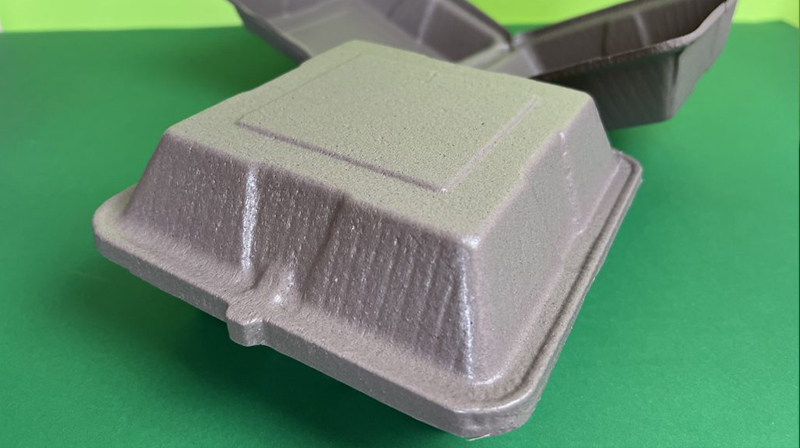In collaboration with the Technological Development Unit (UDT) of the Universidad de Concepción, ZEAplast has developed ecological packaging that uses by-products from the wine industry, helping to reduce the environmental impact of plastic.
With the gradual implementation of Law 21.368, which regulates the delivery of plastics and other single-use products, the creation of solutions to replace these types of elements is imperative.
Replacing these non-degradable plastic containers, commonly used in fast food, with biodegradable containers made from grape pomace, an agricultural waste from the Chilean wine industry, is the mission of CORFO project 21CVC-171691 of the company ZEAplast in collaboration with the Technological Development Unit (UDT) of the Universidad de Concepción.
The Director of ZEAplast and researcher specialized in biodegradable plastics, Juan Carlos Carrasco Prado, says that the initiative “was born from the idea of using a compound based on biopolymers that also have an organic component, of agricultural origin, that is, a by-product of a very relevant industry here in Chile, which is the wine industry and takes advantage of this waste.”
Thus this initiative, in addition to offering a sustainable solution to the problem of single-use plastics, generates value from waste that is normally discarded, “specifically the waste is grape pomace, which is obtained from the winemaking process, which occurs especially after the grape harvest,” details Carrasco.
The pomace – which comes from the commune of Quillón in the Ñuble region – comes in a wet condition, so it must go through a drying process and then be processed by grinding, from which a fine particle is obtained for mixing with bioplastics to obtain the compound for the containers.
The project engineer of the R&D Department, UDT-UdeC, Dr. Cristian Miranda, explains that “the basis of the prototypes is still a plastic, which in this case is biodegradable”, so a kilogram of compound contains about 30% of grape pomace, and 70% of bioplastic.
“This is also born in replacing part of that plastic by this organic load that is a waste, and being a totally organic product, it will not affect the compostability, it will continue to be compostable. Added to the added value of the attractiveness of reinserting a natural waste such as grape pomace, it also gives it a more natural aspect”, explains Carrasco.
Uses in the food industry
According to Greenpeace, Chile is one of the largest generators of plastic waste per capita in the Americas, with 51 kilograms of plastic per person per year, an alarming figure that underlines the need for this type of action.
Thus, these 100% compostable containers are a practical solution for most fast food meals, providing an environmentally friendly alternative in food packaging.
Biodegradable packaging made from grape pomace has proven to be especially effective for medium temperature foods. These packs are ideal for sandwiches, meals and hamburgers, which generally range between 40 and 50 degrees Celsius.
For now, the problem arises with foods with a temperature above 100 degrees Celsius, “there the container loses its properties, it deforms due to the temperature, so it is not suitable for hot liquids, so we could not manufacture cups for tea or coffee. With French fries we had a problem because they come out of the frying process at 180 or 190 degrees and if you put them directly on the container they are deformed by the temperature but they do not break”, explains Dr. Miranda.
Projection
Awarded in 2021, the project is in the phase of presentation of its final results, which will allow evaluation of its continuity. The next stage includes the final review by Corfo and logistical decisions.
“The results are presented, what is missing is the final evaluation by Corfo to give administrative closure to the project, the final report with all the results obtained” – he adds – ‘what we have to evaluate now is the continuity of the project and there we would have to see if there are results that are susceptible to patenting, otherwise the decision would be to protect through intellectual property’, detailed Dr. Miranda.
So far, the development has been carried out through agreements with companies in Santiago, but the team is seeking financing to produce the containers in the region, optimizing costs and local resources. Juan Carlos Carrasco said that for now “we would be interested in obtaining financing that would allow us to have more autonomy to produce these containers here in the region so as not to increase the cost of the product”, since the raw material is obtained in the Ñuble area and must travel to Santiago for its production.
The researchers are also working on the logistical issue with the winemakers, to be able to recover the material before it goes to waste.
Thus, greater autonomy, logistical management and new opportunities for its continuity and growth are part of the key objectives that the team seeks to achieve for a path towards innovation and sustainable development.
Source: UdeC News

